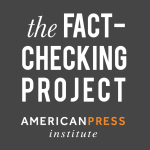 Upworthy defines itself as a curation site for “compelling, meaningful” content — and that content is typically shared widely, often going viral. When Upworthy was launched three years ago by top-ranking ex-staffers from MoveOn and The Onion, it quickly became known for a couple of things: Its speedy growth in both audience and investors; and helping to pioneer a distinctive, two-sentence headline style: (“His school canceled his speech after learning that he’s gay. What resulted was actually awesome.”)
Upworthy defines itself as a curation site for “compelling, meaningful” content — and that content is typically shared widely, often going viral. When Upworthy was launched three years ago by top-ranking ex-staffers from MoveOn and The Onion, it quickly became known for a couple of things: Its speedy growth in both audience and investors; and helping to pioneer a distinctive, two-sentence headline style: (“His school canceled his speech after learning that he’s gay. What resulted was actually awesome.”)
Upworthy also suffered growing pains in the form of a couple embarrassing mistakes and some equally criticized corrections. Upworthy’s response was to create an unusually public and specific policy on fact-checking and corrections, along with a fact-checking team led by standards chief Matthew Savener. Recently, Matt discussed the efforts with the American Press Institute’s Fact-Checking Project, an initiative aimed at finding ways to improve accountability and accuracy in American journalism.
Your fact-checking procedures have evolved since late 2013, when you somewhat infamously published a GIF to correct an unverified story about McDonald’s Chicken McNuggets. What, or who, prompted this evolution and why was it important for you to change some things?
Back in 2013, we were a very young company with a tiny staff and a fast-moving editorial process. That particular post exposed some holes in our standards process, and it led to the fact-checking policies and “backstopping” process that we use today. You can read more about our fact-checking here, but in short, we check every fact on Upworthy against reliable sources. You can trust what you read on Upworthy; that’s extremely important to us because we’re trying to do some good out there, and getting the facts right is an important part in the fight against cynicism.
As for the GIFs of our editors on that correction post, they were genuinely meant to convey our apology and regret. Upworthy has always strived to speak the language of the Internet, and that was done with real sincerity.
How has strengthening your fact-checking process impacted your traffic and business goals?
Upworthy works to find meaningful stories that make a difference in the world and share them with the widest possible audience. Some pieces go viral, many don’t. We’re not chasing traffic, we’re chasing meaning.
And if you want to have a meaningful impact, you have to be trustworthy. People don’t return to sites they can’t trust. Upworthy is a place we want people to return to again and again, and a strong fact-checking process builds that trust, and ultimately, your audience.
But simply put: If something is inaccurate, it’s not Upworthy. We do our very best to ensure before we publish a post that it is factual. But occasionally we make mistakes, even major ones. When we do, we very publicly correct them (including on social media) and keep track of them all right here on our corrections page. We’ve published thousands of posts since early 2012; out of those, we’ve had three major corrections and about 20 minor ones.
And if you want to have a meaningful impact, you have to be trustworthy. People don’t return to sites they can’t trust.
You wrote in a recent in a blog post: a fact-checking team is “a rarity at a time when even print magazines are laying off fact-checkers.” Because your site curates much of its content, you’re confronted by a bazillion bogus Internet stories every day. How do you hire and deploy your fact-checkers, what skills should they possess, and how much content do they handle?
It’s true that there are a lot of bogus stories out there, but the biggest factor in keeping the amount of content we fact-check down is the fact that most content is not what we consider “Upworthy.” We don’t need to fact-check whether a Justin Bieber ringtone saved a man from a bear because it doesn’t belong on Upworthy to begin with.
When our writers find a piece of Upworthy content, one of our Standards team members fact-checks it first, before we write it up. Often we supplement the content with more context and facts of our own, or we research a story idea to help the writer find the most Upworthy angle. We love contributing to Upworthy’s storytelling like that.
In an average month, we fact-check somewhere around 100 pieces of content and reject only a small handful of those. Like I said, most of the bogus stories never make it to the Standards team. Sometimes we’ll also approve content with an “asterisk” — usually that means the overall content is sound but one or two individual facts are off, which we call out and clarify in the post so our readers are getting a great piece of content as well as all the correct information.
[pulldata context=”There are a lot of bogus stories out there…most content is not what we consider “Upworthy.””]When it comes to hiring fact-checkers, experience is a must; all three of us have years of copy editing and fact-checking under our belts. Skepticism and curiosity are huge assets, as is a broad base of knowledge about our modern world. Ditto a great sense of humor and the ability to switch rapidly between minutiae and the big picture. And I believe that the ability to let things slide and make exceptions to the rules is underrated in our line of work — we need people who can think critically about the best option instead of what’s supposedly the right one.
Let’s look at a recent correction: The original story stated that a kindergartner ran/walked 3.7 miles in 20 minutes, which of course should raise some skepticism during the writing and editing process. Where did the process break down and what can we learn from that?
That video was in a foreign language and its translation was confusing; it sounded like the speaker said that figure. This should have raised a flag and we missed it. The lesson we learned here is the same lesson that every copy editor learns the hard way every so often: Slow down and take care.
What advice and technology tips would the experts on your fact-checking team share with readers who want to check the veracity of content they find on the Internet?
It’s not sexy, but we generally start with “five minutes of Googling.” That means starting with a hypothesis that drives your searching, doing multiple searches, looking for multiple sources and cross-checking what you find. Curiosity and experience are the best teachers for expert Googling. That will usually bring up any big problems with the content or creator. From there, we dig in on individual facts and do our best to verify them against trustworthy sources. My team is fantastic at finding obscure facts buried in government reports or scientific studies. Finally, we take a look at the overall picture of the content — whether it’s making a sound and fair argument or assertion.
Content about science is sometimes challenging, especially when it takes an uncompromising stance on a complicated issue. I like to say I’m allergic to superlatives, but we find them frequently in the way people talk about science on the Internet.
Some great sites about fact-checking and verification:
- Snopes (of course)
- FactCheck.org
- The Washington Post’s Fact Checker
- PolitiFact
- Verification Junkie
- And API’s own Fact-Checking Project newsletter! (As an avid traveler who is, let’s say, not the biggest fan of Frontier Airlines, I loved the airfare fact-check in a recent issue.)
You might also be interested in:
Reaching younger audiences has long been a challenge for media organizations. As platforms evolve, trust in news shifts and news avoidance grows, it can feel especially difficult to connect with and serve multigenerational audiences in an authentic and sustainable way. How can news leaders do their part to represent and include community perspectives from members of different age groups?
For us, we knew one of our biggest hurdles to success would be challenging the assumptions, both spoken and unspoken, we held for others. Here’s what we’ve learned over the past three years of gathering multigenerational problem-solvers.
Generational tension has always existed, of course, but today it is amplified by several factors, both in our communities and our newsrooms. We asked five summit participants to share more about the ways they are engaging and serving multigenerational audiences.


